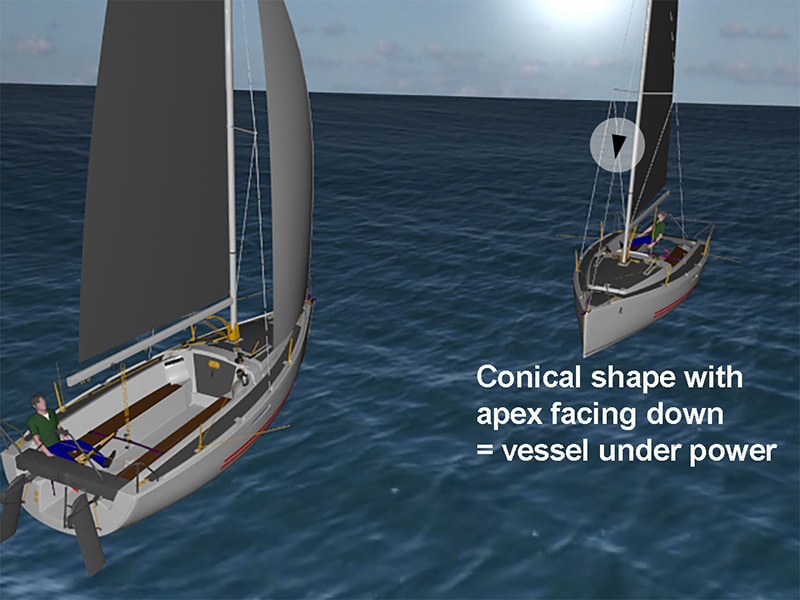Motor Sailing
If the wind is light and your time is short you might want to consider motor sailing—using your auxiliary engine for propulsion, sometimes in conjunction with your sail(s). When using sails and engine power, be careful to make sure the boat does not heel to the point where the water intake comes out of the water. You will burn out the water impeller and damage the engine.
If you are sailing directly into the wind in waves or swell, keeping the mainsail up and tightly sheeted will stabilize or at least reduce rocking. Certainly, douse the headsail otherwise it will flog, luff, flap, and make a lot of noise. Also, flogging fatigues the sails and the parts to which they are connected.
For purposes of give-way versus stand-on in the navigation rules of the road, you are now a power vessel, even if your sails are up. When your engine is used for propulsion, the sailing vessel under the rules becomes a power vessel.
Rule 25 (e) also applies: A vessel proceeding under sail when also being propelled by machinery shall exhibit forward where it can best be seen a conical shape, apex downward.
Below, the sailing vessel under power and sail is on a starboard tack, correctly displaying the under-power day shape. She must give way to the port-tack sailing vessel.

Motor Sailing
A Final Word on Sailing
A sailor who refuses to learn is indeed a dangerous sailor. Knowledge of sailing techniques is infinite and continually evolving. It is the heart of sailing. Even if you are experienced, you will continually be adding to your sailing lexicon each time you get on the water. Always keep an open mind, douse your ego, open your eyes, and raise your ears. We guarantee you’ll be a better sailor for it.







